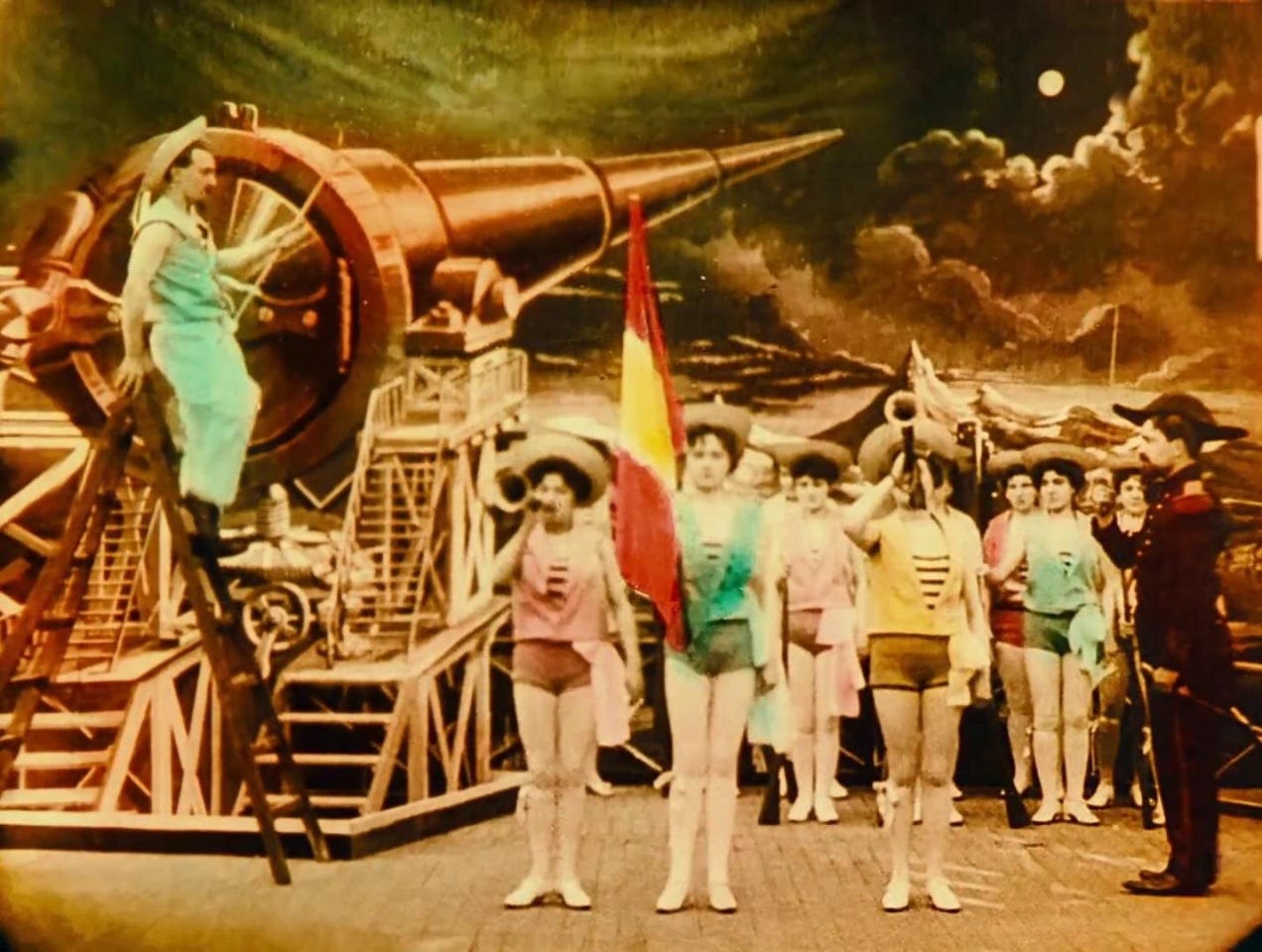Paid subscribers can scroll to the bottom to hear an audio file of me reading this post—with some extra commentary and music (my rendition of a Taylor Swift song).
…
Let’s see. How to kick off the new year? With reflection. Lots of travel in 2024. Plus, we had a sold-out night for my play. I released an album of all-original tracks for The Earful Tower. I finished drafting my next book, which I truly believe is my best work yet. And as always to close out the year, I made lists.
Lists of favorite books, songs, vinyl albums, movies, etc. But I’m not sharing them. I don’t want to bore you. They only matter to me. However, I will tell one story I came across while compiling my favorite movie list. It’s about the 1902 silent film that rivals the creativity of many modern movies.
I make my lists because they’re introspective. I always learn something about myself, even if not much changes year to year.
And each December as part of this exercise, I reassess my top 50 favorite movies of all time. I’m no film buff. But I do love art and storytelling. Film is obviously a very accessible and popular way to combine the two.
On the movie list, a few come and go when I reassess. I realize I’ve included some titles based on recency bias. Or I realize I don’t care about a movie as much as I thought I did last year. Got a recommendation? I’ll take it.
This year, I was more willing to include short films on the list because sometimes those really inspire me. Why shouldn’t I include them? I like several short films better than some full-length movies.
That brought me to Georges Méliès’s silent film La Voyage dans la Lune, or A Trip to the Moon. It was created in 1902 at the very dawn of modern cinema, and it is a whizz-bang piece of storytelling on film.
In fact, it’s kind of remarkable how complex it is. It’s an explosion of imagination. Incredible sets and costumes. Special effects meant to look more surreal and illusionary than lifelike. Impeccable style.

The run time is 14 minutes, but it actually feels a little shorter. It’s about a group of astronomers that launch themselves to the moon, explore, and meet lunar natives.
While it’s silent, Méliès meant it to go with music. But, there was never an official score. The filmmaker left that up to the movie houses.
It’s worth noting, though, that English pianist Ezra Read composed a piece titled A Trip to the Moon: Comic Descriptive Fantasia in 1903 that may have been commissioned by Méliès.
Here’s the part that really blows my mind. The movie was released in black and white, but a limited number of color copies were created by — get this — hand painting the negatives frame by frame. That is a daunting task, considering there are over 13 thousand frames.
A coloring lab led by Élisabeth and Berthe Thuillier in Paris took on the job, employing two hundred women, each assigned a color, painting in an assembly line. That’s intense.
The film’s modern history is almost as interesting as its conception. All color copies of the film were thought to have been lost until 1993, when one was anonymously donated to a film archive in Spain as part of a 200-piece collection.
The donated film is not thought to be of the original colorized run, but a second-print of the negative likely painted in Spain. One of the flags is painted with Spanish colors. Still, it’s been dated pre-1906.
Now, that film has been painstakingly restored. It’s the version that’s been released on HBO Max, along with several other Méliès films. They are all spectacular, ultra-creative, and wildly imaginative.
But A Trip to the Moon remains his most popular and my favorite. It’s ambitious and spirited. A bigger production than most others of his. I’m not in love the choice for a score in the HBO Max version, but I see what the composer was going for. I’ll admit: I watch it with the sound down. I prefer something more “of the period.”
I don’t have a New Year’s resolution. I have goals that aren’t bound by the calendar year. However if I did, it might be to approach my artwork, in any medium, with the level of imagination and care that Georges Méliès brought to his films.
So no New Year’s resolution for me. But a little inspiration never hurt.
Paid subscribers will find Episode 21 of Live Readings below. These episodes are like mini radio shows. Usually between 12-20 minutes long. Today, I read this post live, add a little commentary, and share some music (my rendition of a Taylor Swift tune). In this episode, I also flub my words and create the phrase “no year’s resolution,” which actually works for me. Enjoy.
Keep reading with a 7-day free trial
Subscribe to Pres Maxson to keep reading this post and get 7 days of free access to the full post archives.




